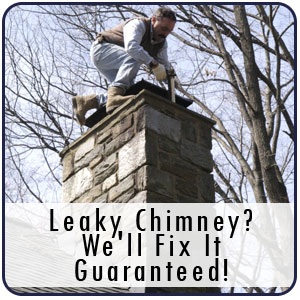West Allis Chimney Cleaning by Clean Sweep is and is focused on providing high-quality service and customer satisfaction - we will do everything we can to meet your expectations.
“Chimneys really decorate the roofline of a home… and they’re maintenance–free, besides. Right?” Your chimney–and the flue that lines it–adds architectural interest to your home, but its’ real function is to carry dangerous flue gases from your fireplace, wood stove or furnace safely out of your home. A chimney helps your household air stay breathable…just as your windows and your bathroom, attic and kitchen vents do. Unlike those other exhaust points in your home, however, fireplace and wood stove chimneys need a special kind of care. As you snuggle in front of a cozy fire or bask in the warmth of your wood stove, you are taking part in a ritual of comfort and enjoyment handed down through the centuries. The last thing you are likely to be thinking about is the condition of your chimney. However, if you don’t give some thought to it before you light those winter fires, your enjoyment may be very short-lived. Why? Dirty chimneys can cause chimney fires, which damage structures, destroy homes and injure or kill people. No One Welcomes a Chimney Fire A chimney fire in action can be impressive. Indications of a chimney fire have been described as creating: loud cracking and popping noise a lot of dense smoke, and an intense, hot smell Chimney fires can burn explosively – noisy and dramatic enough to be detected by neighbors or people passing by. Flames or dense smoke may shoot from the top of the chimney. Homeowners report being startled by a low rumbling sound that reminds them of a freight train or a low flying airplane. However, those are only the chimney fires you know about. Slow-burning chimney fires don’t get enough air or have fuel to be dramatic or visible. But, the temperatures they reach are very high and can cause as much damage to the chimney structure – and nearby combustible parts of the house – as their more spectacular cousins. With proper chimney system care, chimney fires are entirely preventable. Creosote & Chimney Fires: What You Must Know Fireplaces and wood stoves are designed to safely contain wood-fuel fires, while providing heat for a home. The chimneys that serve them have the job of expelling the by-products of combustion – the substances produced when wood burns. These include smoke, water vapor, gases, unburned wood particles, hydrocarbon, tar fog and assorted minerals. As these substances exit the fireplace or wood stove, and flow up into the relatively cooler chimney, condensation occurs. The resulting residue that sticks to the inner walls of the chimney is called creosote. Creosote is black or brown in appearance. It can be crusty and flaky…tar-like, drippy and sticky…or shiny and hardened. Often, all forms will occur in one chimney system. Whatever form it takes, creosote is highly combustible. If it builds up in sufficient quantities – and the internal flue temperature is high enough – the result could be a chimney fire. Certain conditions encourage the buildup of creosote. Restricted air supply, unseasoned wood and, cooler than normal chimney temperatures are all factors that can accelerate the buildup of creosote on chimney flue walls. Air supply may be restricted by closing the glass doors, by failing to open the damper wide enough, and the lack of sufficient make-up air to move heated smoke up the chimney rapidly (the longer the smoke’s “residence time” in the flue, the more likely is it that creosote will form). A wood stove’s air supply can be limited by closing down the stove damper or air inlets too soon or too much. Burning unseasoned wood – because so much energy is used initially just to drive off the water trapped in the cells of the logs– keeps the resulting smoke cooler, than if seasoned wood is used. In the case of wood stoves, overloading the firebox with wood in an attempt to get a longer burn time also contributes to creosote buildup. - See more at: http://www.csia.org/homeowner-resources/the_facts_about_chimney_fires.aspx#sthash.eghSZXp7.dpuf
Feel free to contact us at
414-483-9996
We
clean commercial and residential chimneys, fireplaces, wood stove
chimneys and gas and oil furnace chimneys. Our company has served
Milwaukee and Waukesha counties for more than 15 years, and is licensed
and insured.



No comments:
Post a Comment